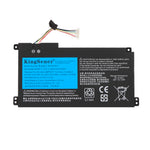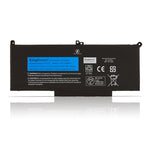You have no items in your shopping cart.
What should the public know about AED use?

What a horrible thing it is to experience 3-4 seconds of dizziness and blackness, 30-60 seconds of cessation of breathing, and 4-6 minutes of gradual death of brain cells, which means the end of life, after a cardiac arrest occurs in our heart.
AED a portable medical device that can diagnose specific cardiac arrhythmias, is a medical device that can be used by non-professionals to resuscitate patients in cardiac arrest. Defibrillation and cardiopulmonary resuscitation (CPR) using an automated external defibrillator (AED) is the most effective way to stop sudden death in cardiac arrest, but only during the “golden four minutes” of the optimal resuscitation time.
Is it dangerous for a layperson to use an AED?
Most untrained people may think it is a dangerous operation. In fact, an AED is an automatic defibrillator/repatheter. The main difference between an AED and a defibrillator used in a hospital is that it automatically determines the patient's heart rhythm and can automatically make a judgment as to whether or not to administer a shock.
The fully automatic AED only requires the rescuer to attach the electrode patches, and it will automatically analyze the patient's heart rhythm and discharge automatically according to the results of the analysis; if the patient is judged not to be in ventricular tachycardia or ventricular fibrillation, the AED will not discharge. Therefore, we do not need to worry too much about the harm caused by misuse of AEDs.
What is the need for an AED?
AED is only applicable to patients with unresponsive, non-respiratory and non-circulatory signs of ventricular fibrillation or pulseless ventricular tachycardia, that is, the cardiac arrest mentioned above. According to statistics, if the patient is defibrillated by AED within one minute, the probability of survival is 90%, and the hope of survival decreases by 7% to 10% with every one-minute delay. It is obvious that AED and time are very important for sudden death patients, so it is especially important for us to know the location and use of AED equipment in advance.
How to use AED?
Before use, you should first assess the scene, when the patient suddenly fell to the ground, immediately let the patient lie down on a flat surface or hard board, and confirm that the scene and the surrounding environment is safe, to avoid the occurrence of secondary injuries. Then tap the patient on both shoulders and call out (e.g., Mr. Mr. What's wrong with you?) to determine if he or she is conscious. Look at the patient's chest to see if there is a rise and fall, touch the carotid artery to see if there is a beat, the above operations need to be completed within 10 seconds. CPR should be performed immediately after determining the vital characteristics, while designating one person to call 120 and another to quickly obtain an AED.

Kingsener For M5070A M5066A M5067A M5068A 861304 Replacement Battery 9V 2019-12
The principles of AED use are all the same:
Follow the voice instructions. During CPR, the AED is used as soon as it is in place. Place the AED near the patient's head for easy maneuverability. The AED was originally designed so that any person could operate it without a threshold. Because of the urgency of the situation, there was no time to read the instructions, so after turning on the power switch, operate the AED according to its voice prompts:
1,lift the cover of the AED and turn on the power switch.
2,According to the voice prompts, undo the patient's blouse, tear off the electrode sheet, and stick it on the patient's chest according to the diagram.
3,Insert the wire of the electrode sheet into the AED host, and the host will analyze it automatically.
4,Don't touch the patient during the process of host analysis, if analyzed to the situation that can be electrocuted, the machine will automatically charge.
5,charging is completed, the voice will prompt to press the button to complete the electric shock. Do not touch the patient during the process.
6,After the first shock is completed, CPR will start immediately without removing the electrode pads.
7,Every 2 minutes, the AED host will automatically analyze the situation again, and if necessary, will recommend the electric shock again.
AED use of several special circumstances
1.Use AED in water:
It is necessary to move the patient away from the water environment, and dry the skin of the patient's chest wall, so as to avoid the shock energy being dispersed by the water on the surface of the body and make the current through the heart insufficient.
2.AED use in patients with pacemakers or implantable defibrillators:
Firstly, it is clear that this type of patients can use AED; secondly, we need to keep the electrode patch away from the pulse generator of the original pacemaker or defibrillator (more than 2.5cm) to minimize the risk of damage to the original pacemaker or defibrillator.
3.Use of AEDs in pediatric patients:
Patients aged 8 years (25 kg) and above should use the AED as adult patients; patients under 8 years (25 kg) are recommended to use the pediatric mode, with the electrode patches applied to the center of the nipple line in front of the chest and to the corresponding position on the back, respectively. If there is no child mode AED available, the second best option is to use an adult AED.
4.Use of AED in pregnant patients:
The use of AED in pregnant patients is no different from non-pregnant patients.
AED is a life-saving device, which can help us save lives at critical moments. In our daily life, we should pay attention to and learn how to use AED so that we can take timely action when needed.
If this article still doesn't help your laptop battery, you can buy a new battery at BatteryMall.com
If you want to learn more about batteries, please visit:BatteryMall.com/blogs/support








